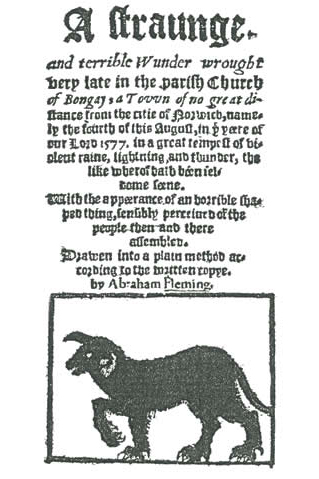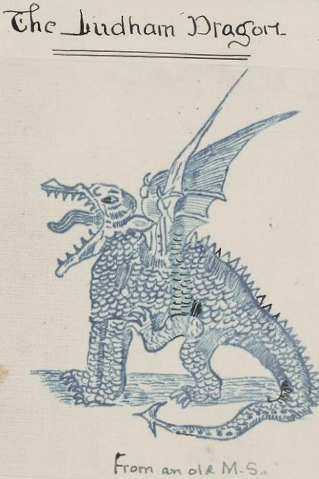

From folk tales, urban myths and ghost sightings, discover some of the darkest tales told about the lives of those living on the Broads.
It is said that if you stand still and quiet on Potter Heigham bridge at midnight on 31st May, you’ll hear the terrifying clatter of a coach racing past you to its doom. Driven by a skeleton, bent on a dark purpose, it tumbles over the bridge, taking the captive new bride, the Lady Evelyn, to her death on her wedding night.
It’s over 200 years since Lady Carew employed a witch to create a potion, so strong that it secured the heart of a wealthy bachelor for her daughter. In return, the crone asked for nothing but one, undisclosed wish.
Slipped the potion during a hunting party to King’s Lynn, the bewitched Sir Godfrey Haslitt of Bastwick fell for Lady Evelyn. After a short while, they were married at a lavish spring wedding in Norwich: happy and in love they swept home for the wedding breakfast.
But at the stroke of midnight, the horrifying figure of a skeleton appears at the door and grasps the new bride, dragging her away into the darkness. Using a carriage and four black horses, the grotesque assailant kidnaps her, the rest of the desperate wedding party giving chase.
Lady Carew watches from afar as the coach containing her beloved daughter reaches the bridge, bursts into flames and crashes into the waters below. Her heart chills as she realises this was the witch’s one wish.

There are many tales told of Black Shuck. Old tales, new tales, half-sightings and terrifying stories of meeting a shaggy black dog with one, fiery eye in the middle of the night.
It is said his howl will curdle your blood but that his footfall makes no sound. Some talk of eyes like saucers and a hot breath like fire on your face. To some, he’s neither black, nor a dog, cleverly disguising himself as a cat to stalk his prey.
Slinking along lonely coastal paths, hunting in the fields and woods, will you meet him on a muddy lane? Perhaps he’ll pass you in the half-shadows of an old oak, as the moon rises on a summer’s night, or he’ll creep up on you, cloaked in the misty chill of a mid-winter afternoon.
Supernatural, paranormal or just a shaggy dog story for dark nights, the earliest tales of Black Shuck date back to the 16th Century. Associated with a devastating summer storm that struck the parish churches of Bungay and Blythburgh, the dog has been rearing its terrifying head in the folklore of the area ever since.
The dog wanders. Across Norfolk and Suffolk and as far afield as Cambridgeshire and Essex. Said to guard buried treasure at the ruined St Benet’s abbey, he is also seen at Coltishall Bridge at the upper reaches of the Bure. One time being headless, another “as big as a calf and as noiseless as death”. As late as the 1960s, two RAF officers were stunned to see him on the cobbles of Coltishall High Street, only for the large black dog to completely vanish into thin air.
Roaming the coast at Caister-on-sea on stormy nights, some say he’s looking for a long-passed master, while others believe he is a terrifying stranger that drives unsuspecting boys out to sea at Lowestoft, snapping at their legs, sinking his teeth into their necks.
Is he the devil’s dog or the devil himself? Perhaps he’s just had plenty of time to make himself into the image of anyone’s nightmares.
Laid to rest alongside her partner on the quiet island at Long Gores in 1963, the legacy of aquatic botanist, visual historian, ecologist author and artist Marietta Pallis lives on in the gentle, reedy pools and small, violet flowers of the area today.
She was born in Bombay in 1882 to a Greek scholar and poet. Moving across the sea by the time she was ten, the family settled in Liverpool, where she eventually studied natural sciences at the university. Furthering her reading at Newnham College, Cambridge, she also engaged in a scientific survey of the Norfolk Broads, a place where she found a lifelong love.
Well educated and a respected ecologist, Pallis began painting too, her work exhibited at the celebrated Bloomsbury Gallery in 1938. She went on to settle in Norfolk, purchasing Long Gores at Hickling in the 1930s. This is where her love for ecology met her love for swimming. In 1953 she commissioned a large, symbolic pool, coinciding with both the 500th anniversary of the fall of Byzantium, and the publication of research attributing the origin of the Broads to medieval peat diggings. Not only was this an act of deep spiritual meaning, it also became a living investigation into peat, water and how the Broads were formed.
Pallis was also a keen home-movie maker and shot 9.5mm film clips of men working on the nearby farm – it’s said these were studies for later paintings but now, they provide an invaluable insight into the way the land was worked in a bygone era.
Was it her passion for aquatic botany or her fascination with the colour and light of the fens that most entwined Marietta Pallis with the land? Maybe it was her powerful devotion as a Greek Orthodox, and the need to celebrate the rich culture of her Greek merchant heritage? Perhaps it was simply that her bohemian nature captured the spirit of an era. The answer is that it was probably a tapestry of all these things: a testament to the enquiring, spiritual nature of a brilliant woman who loved to swim.
Whether you believe they are direct lines between places of spiritual and historical interest or simply well-worn ancient pathways, ley lines have long been a source of fascination. Crisscrossing the country, there has been much written about the alignment of sites such as stone circles, monoliths and old stone churches, often built on land where worship predates the arrival of Christianity. Some see them as unseen power lines of energy, moving across vast distances and, for others, they’re ancient highways, navigated by the pathway of the sun.
There are many of these ley lines in Norfolk and Suffolk. One is laid out in a local magazine, The Lantern, published in 1979. From St Mary’s church in Rockland St Mary, the line runs 4.5 miles to Trowse Newton, passing through the 13th century nave and tower of St Peter’s in Bramerton. In Kirby Bedon, it progresses through the ruined Saxon round tower of St Mary’s and then onwards through the haunted churchyard of St Andrew’s. The line finishes at the 13th century church, also called St Andrew’s at Trowse. The writer, M.W. Burgess, says he makes “no claim for the ‘mystical significance’ of this, or any other alignment; it merely exists”.
The UK’s most famous line, St Michael’s Ley, starts on the Norfolk coast. Ending in Cornwall on the Mount, known as a point of ancient mystical importance, it runs through Glastonbury and Avebury, also major sites of archaeological and spiritual interest. Said to follow the path of the sun on the 8th May - the festival of St Michael - the gateway is the sunrise at Hopton-on-sea, not far from Great Yarmouth.
Secret underground pathways from place to place, there is something about the damp, dark, long-forgotten nature of abandoned tunnels that captures the imagination.
The two imposing towers of the the ruins of Bungay Castle have long been a landmark in the area. But below ground, legend tells of a mysterious tunnel that leads to Mettingham Castle, said to have been dug at the command of Oliver Cromwell. Despite the tales, no tunnel has even been found.

With all but two of its brethren wiped out by plague, the now ruined Augustinian priory at Hickling is said to be haunted. There have been sightings of a monk who disappears down a tunnel that leads to a marsh drain half a mile away.
Lowestoft is crisscrossed by secret tunnels, used for a number of nefarious purposes. Probably linked with the mythical priory of St Bartholomew, one such route runs from the High Street to the parish church. Another, said to be a smugglers’ tunnel, from the town centre to somewhere out on the cliffs, would have been the perfect way to bring contraband directly into the old houses and underground crypts of the town.
Ludham is home to the most fascinating story. The village is said to have once been home to a terrifying uninvited guest. Having dug itself a labyrinth under the village, a dragon blighted the lives of the quiet residents. It would venture out at night through an entrance that lay between the Carpenter's Arms and the parish church. Until one warm day, it dragged its 15 foot long body out to sun and a brave resident blocked up the hole. Inflamed with rage, it flew away and battered the walls of nearby St Benet’s Abbey, before slinking into a tunnel under the gatehouse.
The name Shuck may derive from the Old English word scucca, meaning demon, or from the East Anglian dialect word shucky, meaning shaggy
Our culture and heritage things to do listings will show you the best places to visit